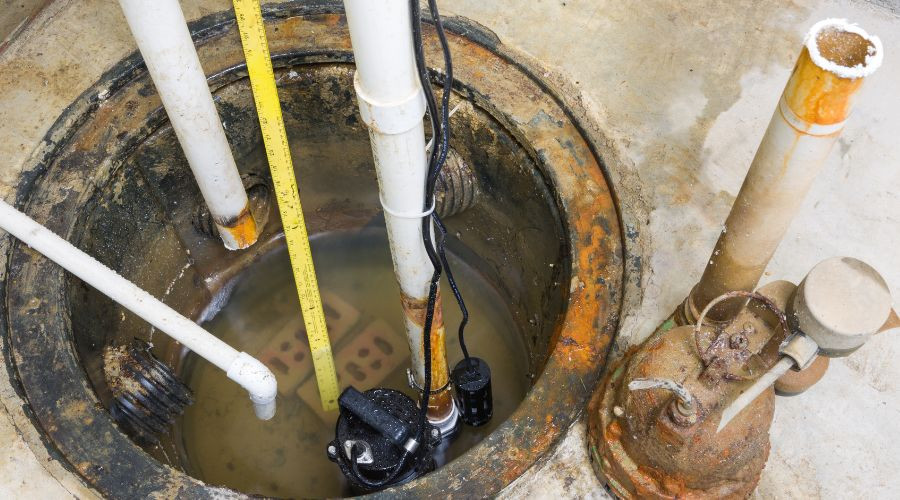Ensure Sump Pumps Work to Protect Homes From Flooding and Water Damage
Sump pumps are important devices that detect rising water levels and remove the water to prevent water from flooding homes and basements. These are crucial for homes at risk of flooding to avoid costly water damage and problems from flooding. However, people must ensure sump pumps are ready for the upcoming rainy season this spring to ensure they can continue protecting their homes. This post will discuss how sump pumps work and ways to help ensure they continue working correctly.
How Do Sump Pumps Work?
 Sump pumps are a home's protection against basement flooding and water damage during times when there is a flooding risk, such as spring snow thaws and heavy rainfall. These water removal systems activate automatically when water levels rise, ensuring the home is protected from flooding and the resulting water damage and mold growth, even when nobody is home.
Sump pumps are a home's protection against basement flooding and water damage during times when there is a flooding risk, such as spring snow thaws and heavy rainfall. These water removal systems activate automatically when water levels rise, ensuring the home is protected from flooding and the resulting water damage and mold growth, even when nobody is home.
A sump pump sits in a specially designed pit called a sump pump basin or sump pit at the lowest point of the home or basement where water collects. When water fills the basin to a predetermined level, a float switch triggers the pump’s motor to start automatically. The centrifugal force created by the spinning impeller pushes water upward through discharge pipes. This drainage system directs water safely away from the home's foundation. Sump pumps are particularly beneficial for homes in flood-prone areas, areas with high water tables, cold climates that see snow, and that have a finished basement.
How to Make Sure a Sump Pump Works Correctly
 Regularly testing the sump pump helps ensure it's working correctly and ready for when it will be needed. The testing process is straightforward. Slowly pour water from a bucket into the sump pit, enough to activate the sump pump. The sump pump should automatically activate and remove the water. Listen for unusual noises that might indicate mechanical problems. If the sump pump doesn't turn, doesn’t remove the water quickly, or sounds strained, it's time for immediate attention by a plumber who can perform sump pump repair.
Regularly testing the sump pump helps ensure it's working correctly and ready for when it will be needed. The testing process is straightforward. Slowly pour water from a bucket into the sump pit, enough to activate the sump pump. The sump pump should automatically activate and remove the water. Listen for unusual noises that might indicate mechanical problems. If the sump pump doesn't turn, doesn’t remove the water quickly, or sounds strained, it's time for immediate attention by a plumber who can perform sump pump repair.
While routine testing is important, professional sump pump maintenance provides comprehensive protection against sump pump failure. A plumber can inspect components and catch problems homeowners might miss, including checking electrical connections, checking that the discharge pipe is free from blockages, and backup systems. Most experts recommend annual sump pump maintenance and inspections to ensure the sump pump can continue protecting the home.
Why a Sump Pump Backup Is Important
Installing a backup sump pump system is an essential safeguard against basement flooding, removing water and protecting the home when the primary sump pump fails, is overwhelmed and cannot handle the flow of water into the home, or loses power during a power outage. If flooding overwhelms a primary sump pump and it can’t handle the volume of water entering the sump pit or the primary sump pump malfunctions when needed, having a backup or secondary sump pump is important for additional protection.
Additionally, power outages may coincide with severe weather events that cause flooding, precisely when the sump pump needs to function most reliably. So, having a backup that can operate without electricity is crucial for continued protection. A battery-powered backup sump pump is a popular backup option that automatically activates when the primary sump pump loses power, providing continuous flood protection during storms and flooding events. Water damage happens fast and is expensive to repair. Having backup protection provides invaluable peace of mind that sump pumps can continue working when needed.
About Plumbing Techs
Plumbing Techs is a trustworthy, family-owned company serving the Oak Park community. They provide straightforward pricing, fast response, and the latest technology. Call them for sump pump installation and services in Oak Park, MI.











